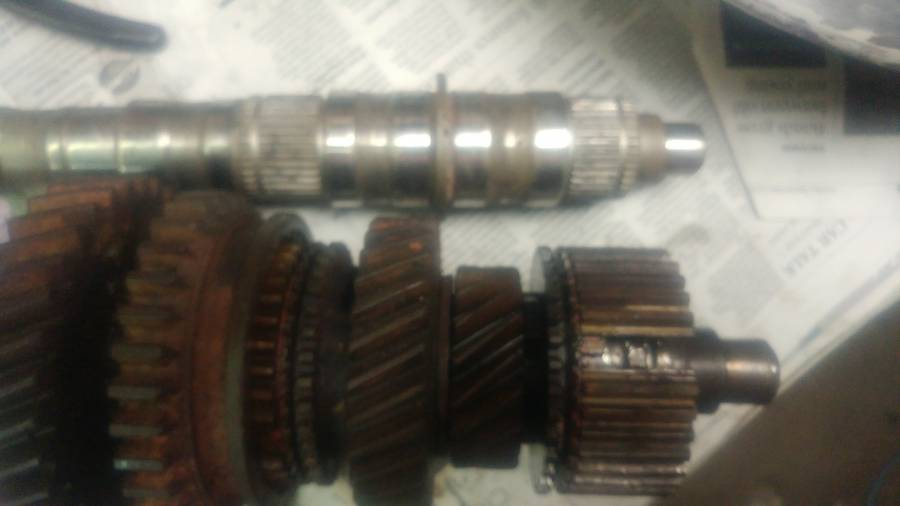Decided to go back an examine in more detail the part difference. Picture of the OD(gears on) and normal Main shaft (no gears). Basically the 2 shaft are identical from the flange back towards the tail. Same size, same hub and slider for 1st and second gear.
What is smaller is the front of the shaft because the new 3rd gear for overdrive is now the smaller OD 4th gear. That small gear required a reduction in shaft diameter. Smaller hub too. Regardless, the shaft is not the issue anyway. The weak link would be the teeth on the shaft and hub that transmit the torque. The teeth on the hub and gears that lock in place when the slider engages. So where things are smaller is direct drive (3rd) and OD (4th). But no where near any limit that you would break the hub, or gear, let alone a main shaft.
The cluster is the same. So if you move this into a cast case, or have OD with cast case you have a transmission just as strong as any other 23 spline.
If you compared it to a slick shift Hemi, it may even be stronger then that. While hemi had a bigger input shaft, the back end is the same as 23 spline other that bushed gears and bigger bearings. Slick shift removed every other engagement tooth on the gear and hub from 36 to 18. That actually weakened the gears. Requiring more frequent repairs, until liberty made their mod with longer and wider teeth.
Aluminum cases are a whole other thing though. As discussed the floating counter shaft and weaker aluminum case could round out causing reduced gear mesh, riding tip of tooth to tip of tooth, with greater back lash, that just gets progressively worse if abused.
When I did this conversion a few years ago, I used later model big bearing cast cases, and over drives from truck set ups that had the longer B/E body shaft and tails.
You could do the same with an A body, but need the A body OD.


Last edited by dragon slayer; 03/27/20 09:25 AM.

